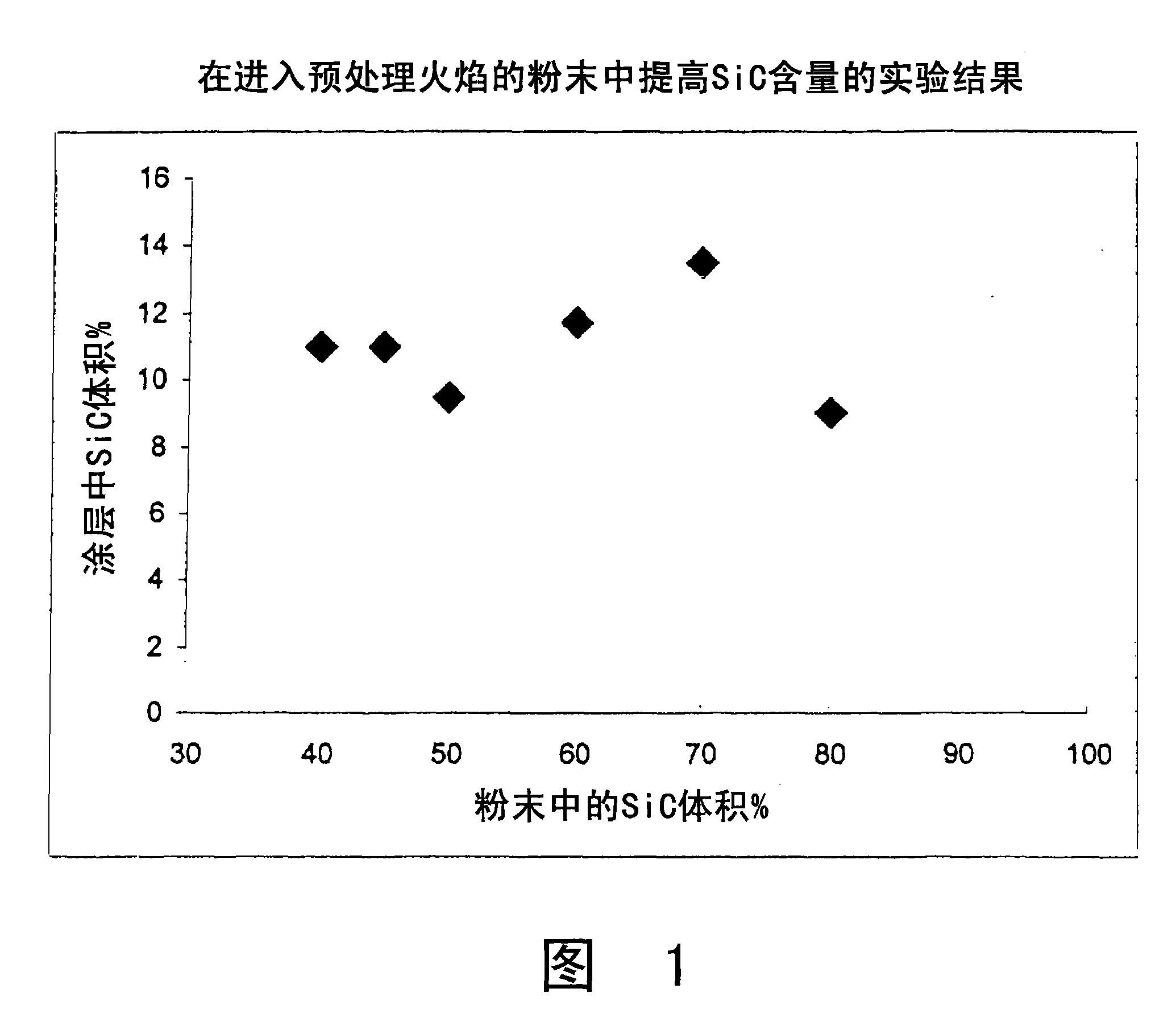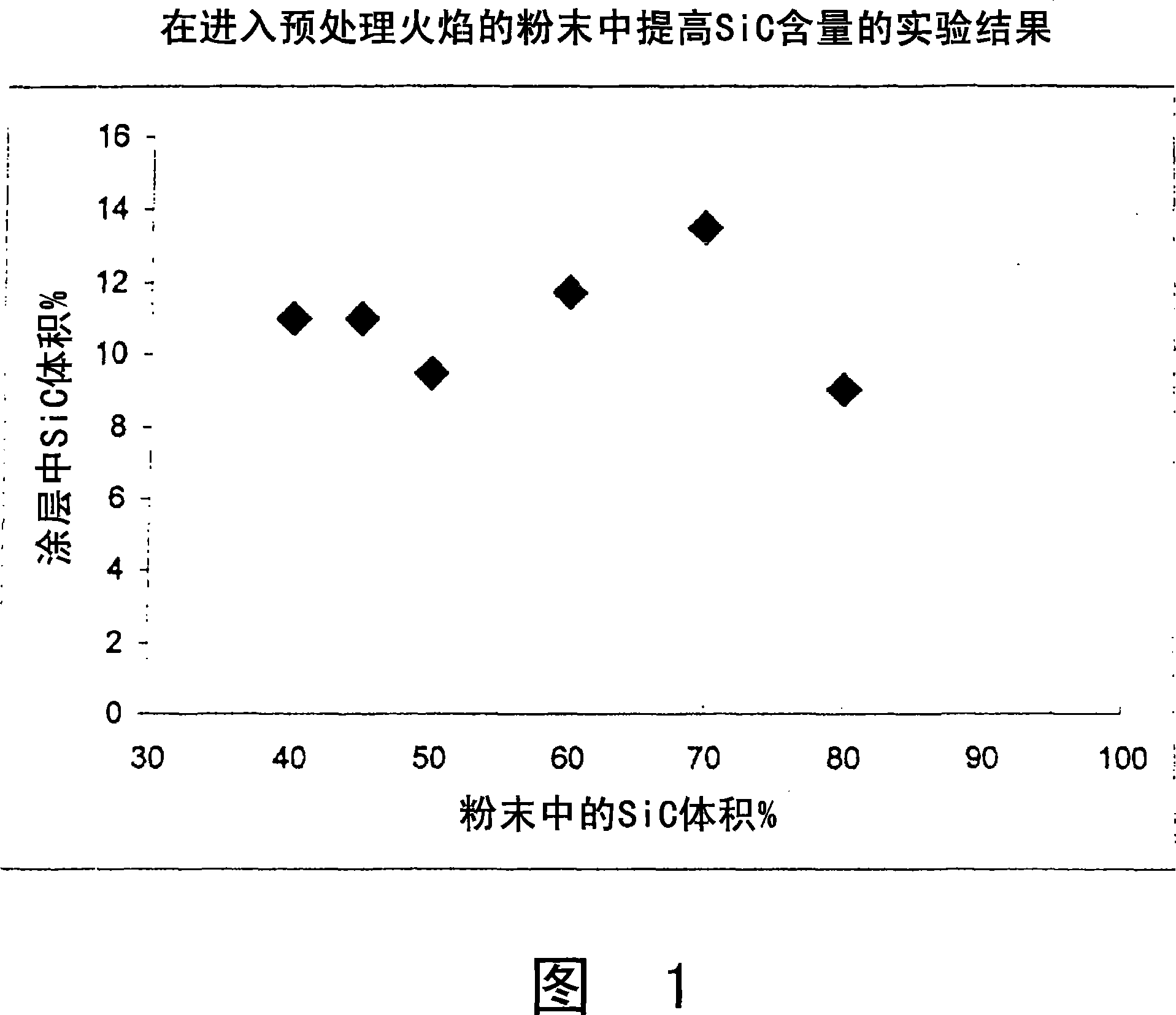Wear resistant ceramic composite coatings and process for production thereof
A technology of ceramic coatings and ceramics, which is applied in coatings, metal material coating processes, air transportation, etc., and can solve problems such as parts that cannot withstand high temperatures, limitations, and labor
- Summary
- Abstract
- Description
- Claims
- Application Information
AI Technical Summary
Problems solved by technology
Method used
Image
Examples
Embodiment 1
[0035] Embodiment 1 (comparative example)
[0036] In this example, silicon carbide is selected as the carbide, with a size less than 70 microns, stored in the first silo. Alumina is selected as the oxide, with a size less than 75 microns and stored in a second silo. Carbides and oxides were co-injected into the APS torch from two separate silos and deposited on the grit-blasted stainless steel substrate. Provided that the procedure is repeated several times until a coating with an apparent thickness of 250 microns is obtained. The purpose of the test was to demonstrate whether a high SiC content in the coating could be obtained without first pretreating the SiC.
[0037] Several sets of tests were performed with different powder feed rates to vary the silicon carbide fraction in the APS torch flame. The silicon carbide volume percent in the plasma torch was varied between 40, 45, 50, 60, 70 and 80 volume percent, the remaining component in the torch in each set of tests be...
Embodiment 2
[0042] In this example, an aqueous slurry containing 98.5% by weight silicon carbide was prepared containing 80 milliliters of water per 100 grams of silicon carbide powder smaller than 70 microns (220 mesh). During pretreatment, the slurry is mixed with submicron sized cobalt and aluminum oxides. After wet mixing for 30 minutes and drying at 149°C (300°F) for 1.5 hours, the dried mixture was tumbled to remove lumps. The prepared ceramic raw material stock was then co-injected into the APS welding torch with alumina (200 mesh screen) smaller than 75 microns and deposited on the grit blasted stainless steel substrate. The volume fraction of silicon carbide treated in the flame was 70% by volume. Provided that the procedure was repeated several times until a coating with an apparent thickness of 250 microns was obtained. Measurements of the coating showed a silicon carbide concentration of 38% and a porosity of less than 5% by volume.
Embodiment 3
[0044] In this example, silicon carbide powder of less than 45 microns was dry blended with 0.05 micron alumina in a tumbler, the mixture containing 70% by weight silicon carbide. After 90 minutes of tumble mixing, the resulting ceramic powder mixture (preparation) was co-injected into an APS torch with alumina < 75 microns and deposited on a grit-blasted stainless steel substrate. The volume fraction of silicon carbide treated in the flame was 40% by volume. Provided that the procedure was repeated several times until a coating with an apparent thickness of 250 microns was obtained. Measurements of the coating showed a silicon carbide concentration of 67% and a porosity of less than 5% by volume.
PUM
| Property | Measurement | Unit |
|---|---|---|
| particle diameter | aaaaa | aaaaa |
| particle diameter | aaaaa | aaaaa |
| thickness | aaaaa | aaaaa |
Abstract
Description
Claims
Application Information
 Login to View More
Login to View More - R&D
- Intellectual Property
- Life Sciences
- Materials
- Tech Scout
- Unparalleled Data Quality
- Higher Quality Content
- 60% Fewer Hallucinations
Browse by: Latest US Patents, China's latest patents, Technical Efficacy Thesaurus, Application Domain, Technology Topic, Popular Technical Reports.
© 2025 PatSnap. All rights reserved.Legal|Privacy policy|Modern Slavery Act Transparency Statement|Sitemap|About US| Contact US: help@patsnap.com


